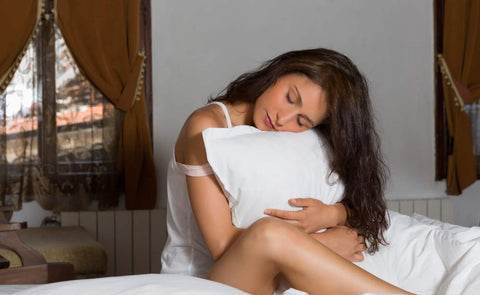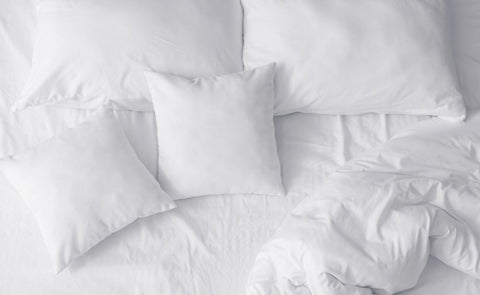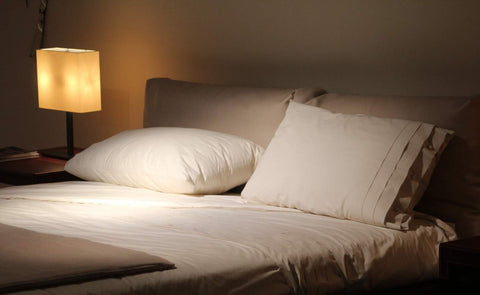Millions of people experience back pain, which often detrimentally affects sleep quality. However, adopting certain sleeping positions may significantly reduce discomfort and lead to a better night's rest. Maintaining spinal alignment while at rest is crucial, as it can alleviate pressure on the back muscles and spine. A supportive sleeping position helps maintain the natural curve of the spine, reducing strain and promoting healing during sleep. Good sleep hygiene practices are also important, including having a supportive mattress and pillow, keeping a regular sleep schedule, and creating a comfortable sleep environment.
For those struggling with sleep due to back pain, adjusting the sleeping position is a recommended first step. Sleeping on one's side with the knees slightly bent is widely suggested by healthcare professionals. This posture helps to balance the body and can take pressure off the lumbar spine. For added comfort and support, placing a pillow between the knees may help maintain proper hip alignment. On the other hand, back sleepers might benefit from a pillow under their knees to keep the lower back curve intact. Adequate neck support with a pillow that keeps the neck aligned with the chest and back contributes to overall spinal health.
Sleep is not merely a break from daily stresses but a critical period for bodily repair and recovery. Pain can disrupt this process, but with the right strategies, individuals can improve both sleep quality and pain management. It is a relationship where each element supports the other: better sleep can alleviate pain, while reducing pain can lead to more restorative sleep. It is, therefore, essential for those experiencing back pain to consider their sleeping positions and sleep environment as part of a holistic approach to manage their discomfort.
Understanding Back Pain and Sleep
Back pain is a prevalent issue that can be exacerbated by poor sleep quality. Various factors contribute to this discomfort, including stress, aging, scoliosis, and sciatica. Sound sleep hygiene plays a pivotal role in managing back pain and is essential for overall health. Individuals with chronic lower back pain may find that their condition interferes with their ability to get restful sleep.
To address back pain during sleep, one should consider the sleeping environment and habits. A mattress that offers proper support and pillows used strategically can help maintain alignment of the spine. This alignment is key in reducing unnecessary strain on the back.
Here is a brief overview of recommendations:
- Physical Activity: Regular exercise can strengthen the back muscles, improving posture and potentially alleviating pain.
- Stress Management: Stress can tense the muscles and worsen back pain; relaxation techniques may facilitate better sleep.
- Sleep Position: Certain positions can help minimize back pain. For example, side sleeping with knees bent and a pillow between the legs can align the spine.
If pain persists, consulting a healthcare provider or doctor is advisable. They can help to diagnose the underlying cause of back pain and recommend appropriate pain relievers or other treatments. Tailoring sleep habits to accommodate one’s specific back pain condition can significantly improve sleep quality and, in turn, life quality.
Fetal Position
The fetal position involves lying on one's side with the legs drawn up toward the chest and a pillow placed between the knees. It is often recommended for individuals with back pain as it can help to align the spine, pelvis, and hips, thereby taking pressure off the spine.
Advantages:
- Spinal Alignment: The curled posture tends to mimic the natural curvature of the spine.
- Reduced Pain: Many find that it lessens back pain upon waking.
Considerations:
- Pillow Placement: A pillow between the legs can maintain hip alignment.
- Moderation: The position should not be overly tight, as it might restrict breathing or cause stiffness.
One should ensure that the mattress provides proper support and is neither too soft nor too hard. The fetal position might be particularly beneficial for individuals with a herniated disc or during pregnancy, as it can reduce strain on the lower back. However, it's significant to avoid curling up too tightly, which can restrict breathing or result in stiffness.
Chiropractic Input: Chiropractors often endorse the fetal position to alleviate spinal stress temporarily. It is, however, considered a temporary measure rather than a permanent solution for back pain. Individuals should consider their overall sleep posture and maintain a balance of comfort and support throughout the night.
Pillow under your abdomen
When an individual experiences lower back pain, finding a comfortable sleeping position can be challenging. Side sleeping with a pillow between the knees is often recommended. However, for some, particularly those with a painful degenerative disc condition, lying on the stomach with a pillow under the abdomen may provide relief.
Benefits
- Reduces Spinal Pressure: Placing a pillow under the stomach and pelvis can help decrease the stress on the spine. This slight elevation helps maintain the spine's natural curve.
- Supports the Lumbar Region: For stomach sleepers, a thin pillow under the lower abdomen can offer additional support to the lumbar region, thus aiding in reducing lower back discomfort.
Considerations
- Pillow Firmness: A firmer pillow may offer better support, preventing sinking and misalignment.
- Body Size: Individuals should consider their body size when selecting the pillow; it should not lift the pelvis too high, as this can cause more strain.
Implementation
- Start by laying face down.
- Place a pillow under the pelvis and lower abdomen.
- If comfortable, use a flat pillow for the head or sleep without one.
Individuals suffering from lower back pain may find that a pillow under the abdomen can help them achieve a more peaceful sleep. Adjusting pillow placement and firmness according to personal comfort and spinal alignment is essential. Those with severe or persistent pain should consult with a healthcare provider to determine the best personal sleeping strategy.
Pillow under your knees
When dealing with lower back pain, sleeping positions can play a crucial role in managing discomfort. Placing a pillow under one's knees while sleeping on the back can provide significant benefits.
Benefits:
- Maintains the spine's natural curve, promoting better alignment.
- Reduces the strain on the lumbar region by evenly distributing weight.
- Helps to prevent excessive stress on the spinal discs.
Sleeping with a pillow under the knees is a straightforward yet effective method to support the lower back. This technique works effectively for back sleepers, helping to maintain the spine's natural curvature.
How to Use a Pillow under Your Knees:
- Lie on your back, ensuring your mattress provides adequate support.
- Place a pillow under your knees, creating a gentle elevation.
- Adjust the pillow to ensure it provides enough support without causing discomfort.
By introducing this small change, many individuals may find a reduction in lower back pain, leading to improved sleep quality. It is essential to select a pillow with the right firmness to avoid any counteractive effects. The pillow should be supportive enough to maintain its shape throughout the night yet soft enough to offer comfort.
Reclined Position
The reclined position is acknowledged for its potential to alleviate lower back pain. In this posture, one lies on their back with the upper body elevated, which may involve the use of an adjustable bed or a bed wedge pillow.
Key Benefits:
- Helps to maintain the spine's natural curve
- Relieves pressure on the discs in the lumbar region
- Encourages even distribution of body weight
Individuals with isthmic spondylolisthesis often find comfort in the reclined position, as it creates an angle between the thighs and trunk, reducing pressure on the spine.
Tips for Optimization:
- Use a pillow under the knees to further reduce lumbar tension
- Ensure correct elevation angle to avoid new pressure points
- Opt for a supportive mattress that conforms to the spine's curvature
The reclined position can be beneficial for those seeking back pain relief during rest. It offers a compromise between lying flat and sitting up, supporting the body in a neutral spine alignment. However, individuals should consult with a healthcare provider to tailor sleeping positions to their specific health needs.



